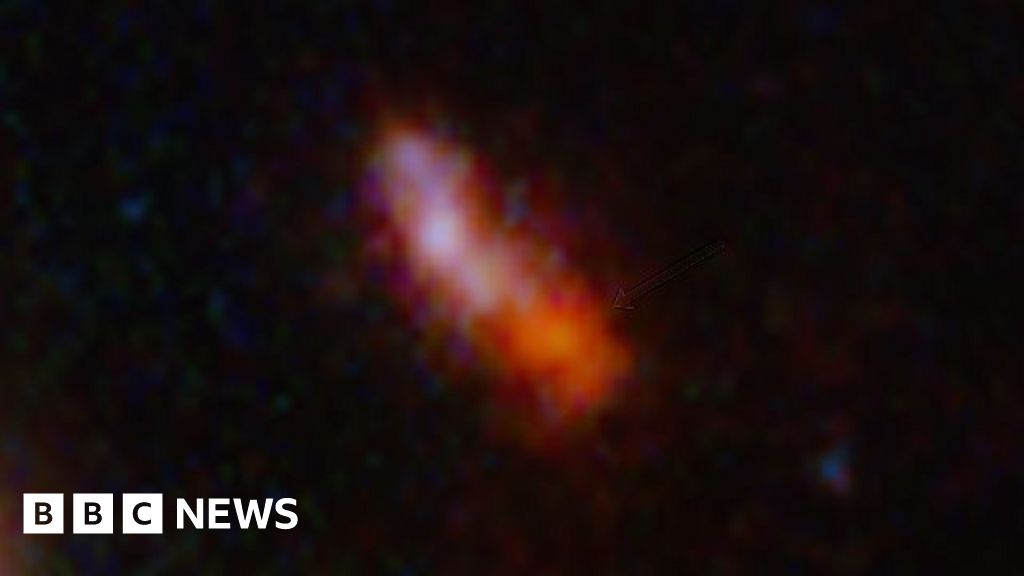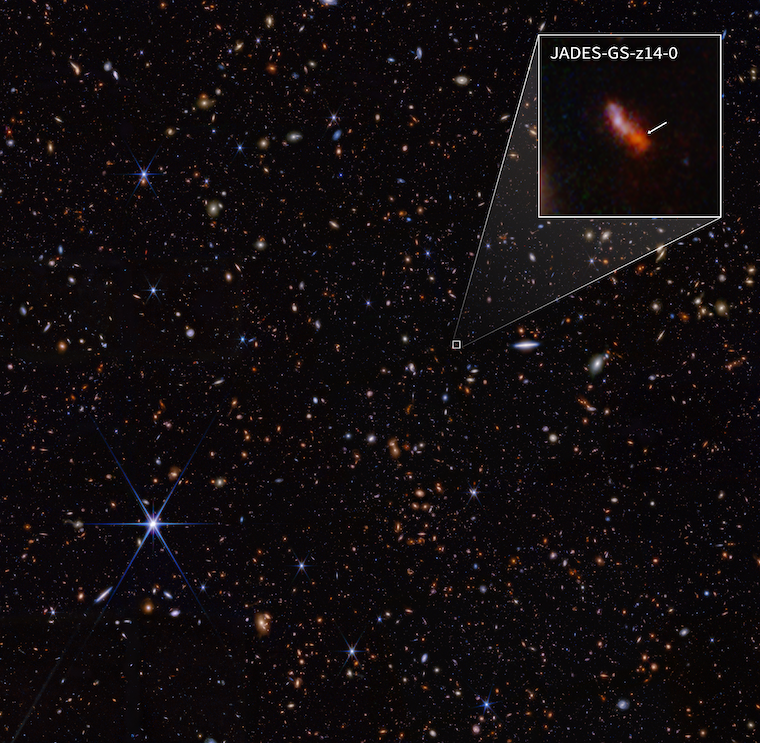
The James Webb Space Telescope (JWST) has made a groundbreaking discovery, observing the most distant known galaxy, JADES-GS-z14-0. This galaxy exists just 290 million years after the Big Bang and holds the distance record due to its large size, which indicates light production by young stars rather than a supermassive black hole.
The discovery marks a major milestone in the study of the early universe and was made by an international team of astronomers led by UC Santa Cruz astronomer Brant Robertson. The JWST Advanced Deep Extragalactic Survey (JADES) team, which includes researchers from universities and institutions around the world, used JWST's advanced instruments to make the observation.
The presence of oxygen in the galaxy suggests that multiple generations of very massive stars had already lived their lives before it was observed. The discovery challenges conventional theories about star formation during this early period in the universe's history.
JWST, launched in 2021, is designed to see farther across the cosmos and further back in time than any previous astronomical tool. Its huge 6.5m-wide primary mirror and sensitive instruments enable it to observe distant galaxies like JADES-GS-z14-0.
The team used various instruments on JWST, including the Near-Infrared Spectrograph (NIRSpec), the Mid-Infrared Instrument (MIRI), and the NIRCam. These instruments allowed them to detect strong ionised gas emission in the form of bright emission lines from hydrogen and oxygen.
The discovery of JADES-GS-z14-0 is a significant step forward in understanding the early universe, as it provides valuable insights into galaxy formation during this critical period. The team plans to continue observing more distant galaxies using JWST to further expand our knowledge of the cosmos.



